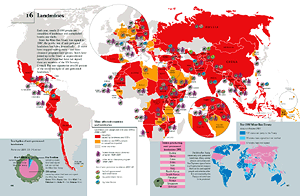publishing
Women Set Type!
Being a historical account of women in printing, publishing, and typographical compositing in these United States of America and Western Europe.
The text below is assembled from Unseen Hands, Women Printers, Binders & Book Designers (Princeton University Library, 2003), Women in Printing & Publishing in California, 1850-1940 (California Historical Society, 1998), and Epochal History of the International Typographical Union (I.T.U., 1925.) Other sources are indicated where used.
“Women have been involved in printing and the making of books ever since these crafts were first developed. Even before the advent of movable type, there was a strong tradition of women producing manuscripts in western European religious houses. In the Convent of San Jacopo di Ripoli in Florence, we find the first documented evidence, in 1476, of women working as printers. Girls and women were often trained by their fathers or husbands to assist in printing businesses, and there are many instances from the fifteenth to the eighteenth centuries of women taking over and managing these enterprises upon the early demise of their male relatives.... Many, certainly, only managed the business, while others were more directly involved. Estellina, wife of the printer Abraham Conant, proudly stated in a Hebrew book, Behinat `olam (Mantua, ca. 1477) that ‘she, together with one man, did the typesetting.’ [source]
In the 19th century, a limited number of occupations were open to women — teaching, needlework, domestic service, etc. Male-only unions ruled the printing business. Women, where employed at all, were relegated to certain low-paying jobs considered best suited for the weaker sex, such as dressing (polishing imperfections) from metal type, folding printed sheets, and sewing bindings. Yet there were exceptions — a few women were also employed in typesetting. Women who were widows or daughters of printers often learned typesetting out of necessity.
James Franklin, brother of Benjamin Franklin, taught something of the art to his two daughters prior to his death in 1835, and when he died he left his printing plan at Newport, R.I. to his widow and family. They operated it successfully for many years.
A woman’s typographical union was formed in France with a journal entitled La Compositrice, and the first major woman’s journal edited by a woman, Godey’s Lady’s Book, was published in Philadelphia from 1830-1858, edited by Sarah Josepha Buell Hale. [source]
...
Women were employed in the Day Book office in New York in 1853, while a strike was in progress against that office. This inspired a determined campaign against women printers. Union leaders inveighed against employment of women and urged the National Typographical Union to do something about it. The National wisely disclaimed any desire to interfere in treatment of the issue by local unions. Horace Greely, celebrated editor of the New York Tribune and a former president of Typographical Union No. 6 of New York, took up his redoubtable pen....
‘Your fears that women will supplant you, or seriously reduce your wages, Messrs. Compositors, are neither wise nor manly. The girls who marry and have families to look after will stop setting type — never doubt that — unless they are so luckless as to get drunken, loafing, good-for-nothing husbands, who will do nothing to keep the pot boiling, and then they must work, and you ought not to be mean enough to stop them, or drive them back to making shirts or binding shoes at three or four shillings a day.
If you find yourselves troubled with too strong a competition from female workers just prove yourselves worthy to be their husbands; marry them, provide good homes and earn the means of living comfortably, and we’ll warrant them never to annoy you thereafter by insisting on spending their days at the printing office setting type. But waxing theologic and pious, you tell us of the sphere of action God designed women to occupy —of her ‘purity’ and of the ‘immorality and vice’ she must inevitably sink into, should she be admitted into the composing room to set type beside you. We feel the force of these suggestions — we admit the badness of the company into which unregulated typesetting would sometimes thro her — but did it ever occur to you that this is her lookout rather than yours? It is perfectly fair of you to apprise her beforehand of the moral atmosphere to which promiscuous typesetting would expose her, but when you virtually say she shan’t set type because if she did your society and conversation would corrupt her you carry the joke a little too far.’
By 1864, due in large part to the depletion of the male work force during the Civil War, additional workers were needed in trades which were previously thought of as ‘male’ trades — one of these being typesetting. The number of newspapers and the demand for printed materials was on the increase, and women began to step into jobs in both the printing and publishing fields.
The National Typographical Union permitted women to form unions and to join existing unions in 1869, the same year it was renamed the International Typographical Union. Augusta Lewis Troup, journalist and typesetter for Susan B. Anthony’s newspaper The Revolution, was elected corresponding secretary of the International Typographical Union in 1870. She became the first woman to hold any national union office. [source]
...
 After hearing of the role of women in the 15th century printing industry, Emily Faithful decided to set up her own firm in Edinburgh in 1857 employing women only. In 1859 she founded the Victoria Press in London and employed men to do the heavy work. This met with a lot of hostility with the print unions which said that it encouraged immorality. In 1862 she earned the title of Printer and Publisher in Ordinary to the Queen, moved to an office in Farringdon Street and then to Praed Street, Paddington, where she remained until 1881. She was also a writer and poet and was involved in some of the publications produced by her firm such as the feminist English Woman’s Journal and the Victoria Magazine. [source] While her journal was established as a general literary magazine it provided a strong feminist emphasis on suffrage, married women’s property, education, employment and all of the other feminist/women’s concerns of the day. [source]
After hearing of the role of women in the 15th century printing industry, Emily Faithful decided to set up her own firm in Edinburgh in 1857 employing women only. In 1859 she founded the Victoria Press in London and employed men to do the heavy work. This met with a lot of hostility with the print unions which said that it encouraged immorality. In 1862 she earned the title of Printer and Publisher in Ordinary to the Queen, moved to an office in Farringdon Street and then to Praed Street, Paddington, where she remained until 1881. She was also a writer and poet and was involved in some of the publications produced by her firm such as the feminist English Woman’s Journal and the Victoria Magazine. [source] While her journal was established as a general literary magazine it provided a strong feminist emphasis on suffrage, married women’s property, education, employment and all of the other feminist/women’s concerns of the day. [source]
During the late 19th century, women writers often moved into positions as editors of newspapers or small journals. At this same time, the Woman’s Suffrage Movement was gaining momentum and the women-edited journals were the obvious choices in which to further their cause. Spiritualism was also a popular movement at the turn of the century among women — largely because it did not discriminate by gender or ethnic background — and the women publishers felt a kinship because of this non-discriminatory nature. Journals such as The Carrier Dove, The Spiritualist, and The Golden Dawn were all journals edited by women and devoted to not only Spiritualism but in some cases, also to the Suffrage Movement.
Other women publishers and editors followed a more literary angle, publishing journals which featured articles on a wider variety of topics. In 1863, Lisle Lester took charge of the Pacific Monthly, a woman’s literary magazine previously known as the Hesperian. It had a rocky career as was the career of Ms. Lester — who was widely known for her strong opinions on many topics and her tussles with the male typographical unions. Another woman, Emily Pitts Stevens, gained prominence when she transformed the Sunday Evening Mercury — which was known as ‘a Journal of Romance and Literature’ — into the premier voice for woman’s suffrage in the West. She hired women to set type for her newspaper and in 1869 changed its name to The Pioneer — as ‘a name that more nearly covers our thought and tells the nature of our object and ambition.’ She became a major force in the founding of the California Woman Suffrage Association on January 28, 1870.
...
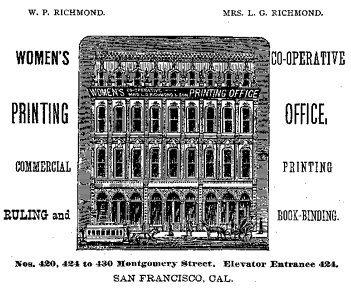 In San Francisco, which was becoming a center for printing and publishing in the West, women-run printing offices appeared in the 1870s and 1880s. The Women’s Union Job Printing Co., the Woman’s Publishing Company, Amanda B. Slocum and Jennie Patrick were a few either woman-run and/or -staffed printing offices of this period. The most prominent and prolific was The Women’s Co-Operative Printing Union, established in 1868 on Clay Street by Mrs. Agnes Peterson, followed in 1873 by Mrs. Lizzie G. Richmond. Early 1870 billheads produced by the WCPU proudly proclaimed, ‘Women set type! Women run presses!’ So confident was Lizzie Richmond that her billheads and advertisements often stated, ’We invite criticism.’ These printing offices produced a variety of printed materials for the public — books, commercial catalogs, corporate annual reports, legal briefs, [as well as] invitations, broadside advertisements, and handbills.
In San Francisco, which was becoming a center for printing and publishing in the West, women-run printing offices appeared in the 1870s and 1880s. The Women’s Union Job Printing Co., the Woman’s Publishing Company, Amanda B. Slocum and Jennie Patrick were a few either woman-run and/or -staffed printing offices of this period. The most prominent and prolific was The Women’s Co-Operative Printing Union, established in 1868 on Clay Street by Mrs. Agnes Peterson, followed in 1873 by Mrs. Lizzie G. Richmond. Early 1870 billheads produced by the WCPU proudly proclaimed, ‘Women set type! Women run presses!’ So confident was Lizzie Richmond that her billheads and advertisements often stated, ’We invite criticism.’ These printing offices produced a variety of printed materials for the public — books, commercial catalogs, corporate annual reports, legal briefs, [as well as] invitations, broadside advertisements, and handbills.
The many journals, newspapers, books, and even billheads that were printed during the late 19th and early 20th centuries used mainly one method of illustration — that of the wood engraving.... Leila S. Curtis and Eleanor P. Gibbons were two women who started up and ran successful engraving businesses in San Francisco. Both were trained in engraving and design. Their designs were found on billheads, business cards, and stationery, as well as in book illustrations, commercial catalogs, and innumerable other small printed items. Magazines published during this period often used the technique of the woodcut — rather than a wood engraving — to illustrate their pages. The technique used in producing a woodcut allowed for larger more fluid compositions. Lucia Mathews cut the designs for Philopolis (1906-1919) — a magazine published by Arthur, her husband, and herself during the early part of the 20th century. Florence Lundborg, an artist influenced by both Art Nouveau and the Arts and Crafts movement of the early part of this century, produced woodcut images for The Lark, the San Francisco literary magazine published by Bruce Porter and Gelett Burgess from 1895-1897. [source]
...
The turn of the century saw an increased interest in the aesthetic aspects of printing — now that women were an accepted part of the work force — and many fine presses sprang up throughout the state [of California]. A fine or ‘private press’ is generally understood to be a small printing house which issues for public sale limited editions of books which have been carefully made on the premises.
By the 1920s a tradition of fine printing was well under way in San Francisco, with Taylor and Taylor, John Henry Nash and the Grabhorns already fairly well established. These printing houses encouraged printing by women.... Other women with their own presses were Rosalind Keep of the Eucalyptus Press, Helen Gentry, and Jane Grabhorn at Colt Press, which was founded along with William Matson Roth and Jane Swinerton. In southern California, private presses were often a husband and wife team. The Saunders Studio Press of Claremont was founded in 1927 by Lynne and Ruth Thompson Saunders. The Plantin Press in Los Angeles was established in 1931 by Saul and Lillian Marks, Saul being in charge of design and layout and Lillian responsible for composition. Women such as Virginia Woolf and Elizabeth Yeats also founded private presses that produced handsome limited editions of the work of contemporary authors and artists. [source]
Women were notably successful at bookbinding, both ‘on the line’ — producing factory bindings — and in the creation of splendid examples of hand binding, particularly during the Arts and Crafts Revival of the late nineteenth and early twentieth centuries.
With the dawn of the 20th century and the emergence of women’s rights, women in printing and publishing entered more seamlessly into the work force. Finally, with the advent of fine press printing, the women printers in the 1920s and 1930s emerge as figures who achieved their goals to work at a skilled occupation that offered them not only an honest living but also a chance to use their creative instincts and skills.”
Report Design as an Activist Tool
Good-looking printed documents can complement protests, lobbying, and media work.
This Saturday, Anne Rolfes and Iris Carter Brown from the Louisiana Bucket Brigade spoke about their campaign against Shell to stop polluting their neighborhood.
They talked about a few of the ways reports and Web sites made a difference to people campaigning on the ground.
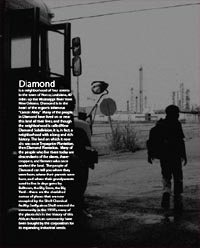 Sophisticated graphics convey the impression of an organized, sophisticated movement. One that can overcome its opponents.
Sophisticated graphics convey the impression of an organized, sophisticated movement. One that can overcome its opponents.- Reports give people pride in their issue, people who have been blown off by governments and powerful corporate opponents. It validates what you think when you see it in print. It makes you ready to take on the man.
- Reports document oral history that may not continue to be passed down. The elders of the community grew up with and around a big old oak tree. Now it’s fenced off, a part of Shell’s industrial property.
- Reports create oral history. Ruth Jones’s son was killed by gas explosion in early 1970s. After the funeral, Shell gave her a check for $500. Ruth agreed to let this be published. The story affirmed the sense of injustice in the community, and the anniversary of his death became an occasion marked by the community annually .
- Reports put the peoples’ side of the story into the mainstream media. Printed reports reach journalists who do not go into the field. The reports tell the details that might not otherwise be told. The documents are also posted on the Web and citations enter electronic press archives. The LABB report began to be cited journals and studies from afar.
- Reports help catalyze the campaign, framing the issues strategically at each phase of the campaign.
- Reports educate different audiences, including elected officials. It makes people in power take the issues seriously. It also encourages people involved in other campaigns, including overseas via the Web site.
- Reports creates room for artistry. Powerful photos and visuals tell the story, and move the emotions.
- Reports create a forum for people in the community. People being poisoned can tell their own stories, put their words into print.
See some of the Louisiana Bucket Brigade’s reports here. They were designed by the Design Action collective and printed by Ink Works Press.
Banned in Translation
From Democracy Now!:
“The U.S. Treasury Department’s Office of Foreign Assets Control recently declared that American publishers cannot edit works authored in nations under trade embargoes which include Iran, Iraq, Sudan, Libya and Cuba.
Although publishing the articles is legal, editing is a ‘service’ and the treasury department says it is illegal to perform services for embargoed nations. It can be punishable by fines of up to a half-million dollars or jail terms as long as 10 years.
Robert Bovenschulte, president of the publications division of the American Chemical Society, which decided this week decided to challenge the government and risk criminal prosecution by editing articles submitted from the five embargoed nations.”
From the Treasury Department itself:
“As you know, the importation from any country and the exportation to any country of information and informational materials, whether commercial or otherwise, regardless of format or medium of transmission, are exempt from the Iranian Transactions Regulations, 31 C.F.R. Part 560 (the ITR). ITR, § 560.210(c)....
Nevertheless, certain activities described in your letter would fall outside of the information and informational materials exemption. The collaboration on and editing of manuscripts submitted by persons in Iran, including activities such as the reordering of paragraphs or sentences, correction of syntax, grammar, and replacement of inappropriate words by U.S. persons, prior to publication, may result in a substantively altered or enhanced product, and is therefore prohibited under ITR § 560.204 unless specifically licensed.”
Boy is this ever crying out for civil disobedience from all of us bloggers. I’m not sure if republishing or translating information off the Web is covered by this (since it’s accessible anyway), but posting translations of otherwise published or unpublished material probably would be.
Let the Office of Foreign Assets Control know about it at ofac_feedback@do.treas.gov. To complain to the Department of Justice about the issue email AskDOJ@usdoj.gov.
Via the Project Censored and Juan Cole
Protest and New Media, 1787
Building on this blog post, more on globalization, graphic agitation, and public relations.
From “Against All Odds,” by Adam Hochschild, Mother Jones, January/February 2004
“The superbly organized anti-slavery committee also pioneered several techniques used ever since. For example, they periodically printed copies of ‘a Letter to our Friends in the Country, to inform them of the state of the Business’ — the ancestor of many a newsletter, print or electronic, published by activist groups today. They also agreed on a piece of text delivered to every donor in greater London appealing for another contribution, at least as big as the last. This may have been history’s first direct-mail fundraising letter.
When the famous one-legged pottery entrepreneur Josiah Wedgwood joined the committee, he had one of his craftsmen make a bas-relief of a kneeling slave, in chains, encircled by the legend ‘Am I Not a Man and a Brother?’ American anti-slavery sympathizer Benjamin Franklin, impressed, declared that the image had an impact ‘equal to that of the best written Pamphlet.’ Clarkson gave out 500 of these medallions on his organizing trips. ‘Of the ladies, several wore them in bracelets, and others had them fitted up in an ornamental manner as pins for their hair.’ The equivalent of the lapel buttons we wear for an electoral campaign, this was probably the first widespread use of a logo designed for a political cause. It was the 18th century’s ‘new media.’
Within a few years, another tactic arose from the grassroots. Throughout the length and breadth of the British Isles, people stopped eating the major product harvested by British slaves: sugar. Clarkson was delighted to find a ‘remedy, which the people were... taking into their own hands.... Rich and poor, churchmen and dissenters.... By the best computation I was able to make from notes taken down in my journey, no fewer than three hundred thousand persons had abandoned the use of sugar.’ Almost like ‘fair trade’ food labeling today, advertisements quickly filled the press: ‘BENJAMIN TRAVERS, Sugar-Refiner, acquaints the Publick that he has now an assortment of Loaves, Lumps, Powder Sugar, and Syrup, ready for sale... produced by the labour of FREEMEN.’ Then, as now, the full workings of a globalized economy were largely invisible. The boycott caught people’s imagination because it brought these hidden ties to light. The poet Robert Southey spoke of tea as ‘the blood-sweetened beverage."
Slavery advocates were horrified. One rushed out a counterpamphlet claiming that ‘sugar is not a luxury; but... a necessary of life; and great injury have many persons done to their constitutions by totally abstaining from it.’
 The abolitionists pioneered another key organizing tool as well, and you have seen it. Rare is the TV program or illustrated book about slavery that does not show a detailed, diagramlike top-down view of rows of slaves’ bodies packed like sardines into a ship. The ship is a specific one, the Brookes, of Liverpool, and Clarkson and his colleagues swiftly printed 8,700 copies of the diagram, and it was soon hung on the walls of homes and pubs throughout the country. Part of its brilliance was that it was unanswerable: What could the slave interests do, make a painting of happy slaves on shipboard? Precise, understated, and eloquent in its starkness, it was the first widely reproduced political poster....
The abolitionists pioneered another key organizing tool as well, and you have seen it. Rare is the TV program or illustrated book about slavery that does not show a detailed, diagramlike top-down view of rows of slaves’ bodies packed like sardines into a ship. The ship is a specific one, the Brookes, of Liverpool, and Clarkson and his colleagues swiftly printed 8,700 copies of the diagram, and it was soon hung on the walls of homes and pubs throughout the country. Part of its brilliance was that it was unanswerable: What could the slave interests do, make a painting of happy slaves on shipboard? Precise, understated, and eloquent in its starkness, it was the first widely reproduced political poster....
Meanwhile, something else feeding the country’s growing antislavery fervor was Olaudah Equiano’s autobiography, a vivid account of his life in slavery and freedom. At seven shillings a copy, it became a best-seller. For an extraordinary five years, he promoted his book throughout the kingdom, winning a particularly friendly reception in Ireland, whose people felt that they, too, knew something about oppression by the British. Equiano’s was the first great political book tour....
The slave interests’ tactics bore a fascinating resemblance to the way industries under assault try to defend themselves today. When, for instance, there were moves in Parliament to try to regulate the treatment of slaves, the planters hastily drew up a lofty-sounding code of conduct of their own and insisted no government interference was necessary. They considered other P.R. techniques as well. ‘The vulgar are influenced by names and titles,’ suggested one pro-slavery writer in 1789. ‘Instead of SLAVES, let the Negroes be called ASSISTANT-PLANTERS; and we shall not then hear such violent outcries against the slave-trade.’”
If, as the author suggests, so many of these grassroots tactics were pioneered here, what was it that made the tactics suddenly possible? Might it have something to do with the increasing availability of cheap paper and printing? A sea change in popular mood and political will fueled by access to decentralized publishing, and direct action in the fields?
Underground Networks
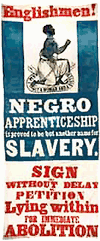 On the power of posters, pamphlets, and petitions in the time of globalization.
On the power of posters, pamphlets, and petitions in the time of globalization.
From “Sailing the Black Atlantic,” by Adam Hochschild, a review of Making the Black Atlantic. Britain and the African Diaspora, in The Times Literary Supplement, October 6, 2000:
“By requiring a complex skein of transport, trade, credit and insurance ties that connected Europe, Africa and the Americas, slavery and the slave trade were the core of the eighteenth century’s version of globalization.
In turn, one might call the black diaspora the era’s Internet. As Walvin points out, it was an information network. Word of the dramatic blossoming of abolitionism in England, for instance, was eagerly carried back across the Atlantic by black sailors, and by black domestics brought back and forth across the ocean by their West Indian masters. Slaves waiting on plantation dinner tables in Jamaica or Barbados listened hard when their owners cursed the do-gooders in Parliament, or the Quakers, who organized a huge boycott of slave-grown sugar. News from each side of the Atlantic affected the other. Reports of hundreds of abolitionist petitions flooding Parliament helped spark some of the revolts among impatient slaves in the Caribbean. The first major uprising, in the French colony of Saint Domingue (later Haiti) in the 1790s, provoked a backlash in Britain against the abolitionists, but a later one, in Jamaica in 1831-2, was crucial in hastening emancipation.”
Branding Peace
![]() A publisher of graphic design books in Barcelona will soon produce a book compiling a selection posters against the war in Iraq designed by artists around the world. When soliciting submissions, the editor announced that profits from the book would be donated to Amnesty International.
A publisher of graphic design books in Barcelona will soon produce a book compiling a selection posters against the war in Iraq designed by artists around the world. When soliciting submissions, the editor announced that profits from the book would be donated to Amnesty International.
I informed the editor that it was a little strange for a book of anti-war posters to support an organization that never actually opposed the war. He was shocked to hear this.
He quoted from Amnesty’s Web site:
“In February 2003, before the start of the war, Amnesty International handed to the UN a petition signed by more than 60,000 people in nearly 200 countries and territories calling on the Security Council to assess the human rights and humanitarian impact on the civilian population of any military action against Iraq.”
This is true, but this is not the same as opposing the war. In fact, this actually implies that the invasion is just fine as long as the humanitarian and human rights impact is within some acceptable limit. This is consistent with International Humanitarian Law. Under IHL, a certain amount of “collateral damage” is assumed. You can kill plenty of civilians, as long as you are not specifically targeting them and have taken some measures to minimize harm.
Amnesty does wonderful work on behalf of prisoners around the world, but they are not an anti-war organization. They are not actually opposed to war, but war crimes. Contradictions abound: Amnesty opposes the use of land-mines as “inhumane,” but takes no position on nuclear weapons. Amnesty also recently launched a campaign to control the trafficking of small arms, though they say nothing about the general trade of large weapons.
The editor wrote, “I went through a list of charity organizations and Amnesty is one that gets one of the highest marks for how much money they use from donations for actual causes rather than promotion etc. Also, they were only one of many charities who responded to my query.”
I pointed out that Amnesty’s is not structured like other organizations. Amnesty’s London office does all the research and generates materials for advocacy, but does no fundraising or marketing at all. It is Amnesty’s autonomous national offices that do the fundraising and marketing. The national offices send a portion of their funds back to the international headquarters in London. Thus, if you looked at the international headquarters of Amnesty it would appear that they spent all of their money on program work and none on fundraising. This is true, but misleading.
I also noted that Amnesty is a well-funded organization. The budget of the its international headquarters was £23,728,000 in fiscal year 2002. That headquarters employs 410 staff. In contrast, many of the small organizations and coalitions that came together specifically to oppose the war are struggling to stay afloat and to keep the pressure on. These groups could use the money a lot more than Amnesty.
The editor considered my arguments and later circulated a poll to let the contributing artists decide who should receive the proceeds. He wrote:
“My original plan for the book was to donate a portion of the profits from the book to a non governmental organization (NGO) which could use the money to help promote peace, non-violence, and help people affected by war. There are many such organizations around the world and it has been very hard to choose one to be the recipient of this donation. I am hoping that you, the artists, can help me choose one of these NGOs and make this a truly democratic project.
The following is a list of NGOs which are internationally recognized and are currently making efforts to help the people in Iraq, either by organizing people against the occupation, or helping people on the ground.
- Amnesty International
- International Answer
- International Committee of the Red Cross
- Not in Our Name
- Oxfam
- Peace Action
- Stop the War Coalition
- United for Peace & Justice
- Win Without War
- War Resisters League
Of the organizations listed, Amnesty International is the only one that has neither opposed to the occupation nor delivered supplies and relief to the people of Iraq. Instead Amnesty asks the occupying forces themselves to ensure that provisions and medical supplies are delivered. Take a look at Amnesty’s own briefing paper on Iraq. Amnesty calls for oil revenue to benefit the people of Iraq, but does not name specific U.S. contracts and companies profiting instead. Amnesty calls for “justice and security,” but not for the transfer of power to the people of Iraq. Amnesty calls for investigations into cases of abuse by US and UK soldiers in Iraq, but would never call for Bush or his administration to be held accountable for the lies that put them there.
No matter. When the votes were tallied, Amnesty International won by landslide.
Design against Corruption
Let’s say the president of your country is corrupt. Let’s just say.
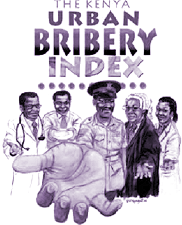 The legislature is corrupt. The court system, police, and military are all corrupt. The city officials? The big businesses? They’re corrupt, too.
The legislature is corrupt. The court system, police, and military are all corrupt. The city officials? The big businesses? They’re corrupt, too.
They misuse their power. They thrive on favoritism and get rich on kickbacks while the rest the country slowly starves. What do you do?
Replacing one individual with another doesn’t change the broader system or take away any of the incentives for corruption.
So how do you reduce corruption throughout a given system?
Transparency International is a network of independent national chapters that work to curb “both the supply and demand of corruption.”
Some of the strategies they use are described in their annual Corruption Fighters’ Tool Kit. The manual is just one of the ways the TI chapters share ideas with each other and offer their experience to the world at large. In addition to the hard work of organizing and building coalitions, many of the corruption-reducing strategies incorporate graphic and interactive design. Some of them include:
- Awareness Raising - TI Korea produced posters, videos, and CD-ROMs to disseminate information about the effects of corruption and local initiatives against it. TI Morocco indexed, cataloged, and analyzed incidents of corruption that appeared in the media, published their findings and will soon make this database accessible online. As part of its campaign to promote access to information in Romania and the Federal Republic of Yugoslavia, TI Romania produced and actively updated a Web site on the issue, printed a pocket guide to inform citizens about their rights, and designed posters and flyers with their Serbian partner organization to promote the idea of free access to public information and raise public awareness about the project. The posters were printed in Romanian and Serbian and distributed through an international network of NGOs and local government offices.
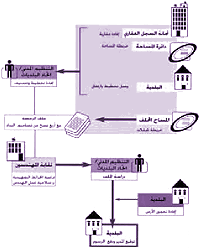 Monitoring Election Campaigns - TI Chile developed and distributed a report card to tabulate the quantity, subject, and context of media coverage devoted to each candidate. They distributed their analysis and data on CD-ROM.
Monitoring Election Campaigns - TI Chile developed and distributed a report card to tabulate the quantity, subject, and context of media coverage devoted to each candidate. They distributed their analysis and data on CD-ROM.- Opening Processes - Activists in Lebanon determined that construction was the most corrupt sector in the country and designed a manual on how to acquire a construction permit, “one of the most difficult bureaucratic transactions in the Lebanese administration.” In response to the government’s lack of reliable information on the process of public procurement, TI Ecuador created an Web site to inform the public (and the private sector), make government forms available, display past and current bidding processes, and host a forum for discussion and analysis.
- Implementing Diagnostics - TI chapters in Bangladesh, Kenya, and Japan developed surveys and metrics for corruption in government and the private sector that they then published locally. TI Lithuania created a database of institutional and geographic aspects of corruption and published a “Map of Corruption” as a foundation for future campaign work.
Public Design, Year 868
From Democracy and Its Global Roots, by Amartya Sen:
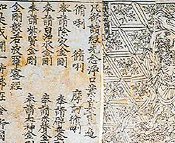 “In the subject of public discussion and communication, it is also important to note that nearly every attempt at early printing in China, Korea, and Japan was undertaken by Buddhist technologists, with an interest in expanding communication. The first printed book in the world was a Chinese translation of an Indian Sanskrit treatise, later known as the ‘Diamond Sutra,’ done by a half-Indian and half-Turkish scholar called Kumarajeeva in the fifth century, which was printed in China four and half centuries later, in 868 C.E. The development of printing, largely driven by a commitment to propagate Buddhist perspectives (including compassion and benevolence), transformed the possibilities of public communication in general. Initially sought as a medium for spreading the Buddhist message, the innovation of printing was a momentous development in public communication that greatly expanded the opportunity of social deliberation.
“In the subject of public discussion and communication, it is also important to note that nearly every attempt at early printing in China, Korea, and Japan was undertaken by Buddhist technologists, with an interest in expanding communication. The first printed book in the world was a Chinese translation of an Indian Sanskrit treatise, later known as the ‘Diamond Sutra,’ done by a half-Indian and half-Turkish scholar called Kumarajeeva in the fifth century, which was printed in China four and half centuries later, in 868 C.E. The development of printing, largely driven by a commitment to propagate Buddhist perspectives (including compassion and benevolence), transformed the possibilities of public communication in general. Initially sought as a medium for spreading the Buddhist message, the innovation of printing was a momentous development in public communication that greatly expanded the opportunity of social deliberation.
The commitment of Buddhist scholars to expand communication in secular as well as religious subjects has considerable relevance for the global roots of democracy. Sometimes the communication took the form of a rebellious disagreement. Indeed, in the seventh century Fu-yi, a Confucian leader of an anti-Buddhist campaign, submitted the following complaint about Buddhists to the Tang emperor (almost paralleling the current official ire about the ‘indiscipline’ of the Falun Gong): ‘Buddhism infiltrated into China from Central Asia, under a strange and barbarous form, and as such, it was then less dangerous. But since the Han period the Indian texts began to be translated into Chinese. Their publicity began to adversely affect the faith of the Princes and filial piety began to degenerate. The people began to shave their heads and refused to bow their heads to the Princes and their ancestors.’ In other cases, the dialectics took the form of learning from each other. In fact, in the extensive scientific, mathematical, and literary exchanges between China and India during the first millennium C.E., Buddhist scholars played a major part.”
Accordingly, the ‘Diamond Sutra’ scroll was dedicated to the public domain. From The Invention of Printing in China, by Thomas Carter, 1955:
“The book consists of six sheets of text and one shorter sheet with woodcut, all neatly pasted together so as to form one continuous roll sixteen feet long... At the end, printed into the text, is the statement that the book was ‘reverently made for universal free distribution by Wang Chieh on behalf of his two parents on the 15th of the 4th moon of the 9th year of Hsien-t’ung.’”
via Three-Toed Sloth and Lawrence Lessig
Mapping the State of the World
Myriad Editions specializes in one type of book: thematic atlases on economic, political, and social trends. The State of the World thematic atlases are full of maps, tables, cartograms, and other infographics that make global issues accessible at a glance.
The first State of The World Atlas was published in 1981 by Pluto Press. It was co-edited by Ronald Segal and Michael Kidron, until his death in March 2003. The book can be seen as part of his attempt to understand and write about capitalism on a global scale. The War Atlas followed in 1983.
Myriad’s list of titles includes:
- The State of the World Atlas (now in its 7th edition)
- The Atlas of War and Peace
- Atlas of Women in the World
- The State of Religion Atlas
- The State of the Environment Atlas
- The Atlas of Endangered Species
- The Atlas of Food
- The State of Health Atlas
- The Atlas of Human Sexual Behavior
- The Tobacco Atlas
- The Penguin Atlas of Media and Information
- and The Atlas of the Future
Individual countries atlases have been published on China, the USA, Germany, and France.
Coming soon: The Water Atlas and Atlas of the Middle East.
See some sample maps and their project for UNICEF illustrating the state of the world’s children.
They’ve done a couple of interactive, online maps for other organizations, too.
No Gay Marriage in the Netherlands
In July, the Vatican called on Roman Catholics around the world to oppose the legalisation of marriages between same-sex couples. In response to the Vatican’s campaign, Dutch gay rights organisations have published manual on how to revoke the legal ban on same-sex marriage in your country.
From AFP:
“The 60-page step-by-step booklet, published in Dutch and English, gives a historic overview of the 16-year lobbying process that eventually led the Dutch government to allow gays and lesbians to tie the knot as of April 1, 2001.
It calls on gays all over the world to challenge discriminatory laws and fight for equal rights through the courts.
In a sense it is a how-to manual for gays abroad campaigning for the right to same-sex unions says Henk Krol, editor in chief of the Gaykrant gay weekly, who created the booklet together with gay rights organisation COC Netherlands [the civil rights group that organized the successful lobby.]...
The manual is [also] intended to help authorities abroad see how they can change legislation, [Amsterdam mayor Job] Cohen added.
The booklet will be sent to foreign gay organisations and will be available online through the Gaykrant and COC websites.
For gays seeking advice on the possibility of marriage in the Netherlands Krol offers some practical tips in the preface to the booklet.
‘A foreigner living with a Dutch man or woman can marry. Two foreigners living permanently in the Netherlands also have this possibility,’ he writes.
For Europeans living in the European Union it could be possible to claim access to the Dutch institution of civil marriage through the European courts, the text suggests....
The manual is called ‘No gay marriage in the Netherlands’.
Dutch gay rights organisations insist that gay marriage does not exist here because under Dutch law it is the same civil union as is entered into by heterosexual couples. There is no special arrangement for same sex unions.
According to the latest statistics, more than 4,300 same sex couples chose to tie the knot in a civil marriage by 2002.”
The text is not yet available online, though the manual is for sale here.


